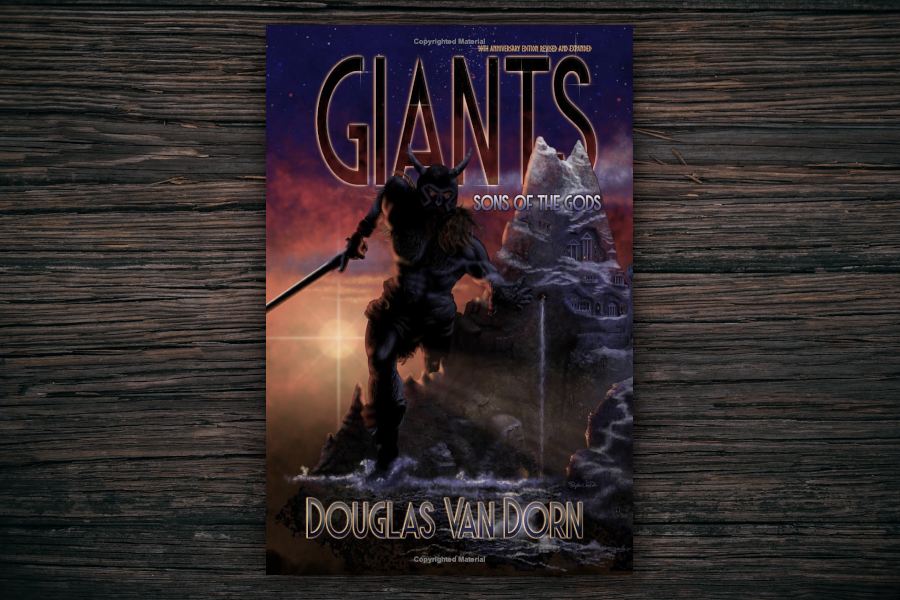A Review of ‘Giants: Sons of the Gods’ by Douglas Van Dorn
Image

Douglas Van Dorn, Giants: Sons of the Gods, revised & expanded, Dacono, CO, Waters of Creation Publishing, 2023, v + 385 pages, pbk.
This review is certainly a departure from what I normally decide to write about (though see this). Yes, it is a book about the giants of the Bible and the ancient (and not so ancient) world. The author is a sober-minded pastor of a Reformed Baptist church in Colorado. Van Dorn is an amillennial covenant theologian (236-237).
I decided to read this book because I have a long-standing interest in the subject and I am a strong believer in the fact that the Bible is a lot weirder than modern scholarship has presented it.
The book is dedicated to Michael Heiser who sadly passed away last year. My opinion of Heiser is that he was a good man who brought foreword some important truths about the supernatural realm in the teaching of Scripture. I do not endorse all of his ideas. I don’t agree with his “Divine Council” views, nor do I buy into his view that saved humans basically replace those who left their first estate, etc. However, his work on Hermon is both fascinating and worthy of exploration, and his attempts to reveal the extent of the supernatural world is overall a real service to the Faith.
Van Dorn’s book begins with him considering and rightly rejecting the “Sethite” understanding of Genesis 6. His rebuttal of that inadequate point of view is fair, patient, and decisive. His Introduction is well worth studying.
The author begins with an examination of “Pre-Flood Giants” and is most compelling. Van Dorn takes Genesis 3:15 as referring to actual descendants both of Eve and of Satan (44-47). Satan’s physical seed would be the giants (nephilim, gibborim). These are memorialized in the legends of the demi-gods of the ancient world (e.g., Hercules, Gilgamesh, Orion). From here he goes to 1 Enoch, which he fully acknowledges is not inspired but believes contains some truth (48-51, Appendix 1), and was resorted to by Jude and 2 Peter (52, Appendix 2).
Van Dorn is a humble and sober researcher who believes the giants may have reached up to 12 feet tall (e.g. Og of Bashan, 125-126). He puts Goliath’s height at the upper end of 9 1/2 ft (154-157). His argumentation looks sound and I have no problem believing these proportions. In fact, owing to the report of the spies in Numbers 13:33 that they “were like grasshoppers in our own sight, and so we were in their sight” I have think Van Dorn’s estimates are quite conservative.
Many writers in this area are guilty of placing far too much weight on extra-biblical works like the books of “Enoch” and “Jasher,” of circuitous and hyper-conjectural Bible interpretation, and of whacky theories about the pre-Adamic earth. Van Dorn always (or nearly always) let’s the reader know when he is speculating and he never pushes the boat out too far. He is a responsible writer who brings forth some highly suggestive and thoughtful studies in ancient words, biblical data, legend, and archaeology to build a plausible picture of the matters he discusses.
I particularly liked chapters 3 through 9 where the author does a good job of showing how the giants (nephilim, Rephaim, Anakim, etc.) are constantly not far from view – much more prevalent than I had realized, and I thought I had tracked them quite well. Van Dorn pulls in not only stories from Genesis 14, Exodus 17, Numbers 13, and Deuteronomy 3, but he introduces data from the ancient world, including the Americas. He even is brave enough to mention the chimeras so commonly seen on stone reliefs and in ancient stories. All this makes for a consuming and diverting (if not slightly disturbing) read. For instance, I really enjoyed his discussion of Bashan and Hermon and his “discovery” of a snake mound close to the Gilgal-Refaim circle in the Golan Heights which points to Mt. Hermon (126-134). I don’t know what to make of them, but I’m glad Van Dorn is trying to make sense of then instead of doing the usual “nothing-to-see-here” maneuver of so many scholars.
Once we move into the NT things start to get less persuasive; at least to me. But even here there is intriguing information (esp. ch. 17). The Appendices are generally helpful, particularly 4, 5, and 6. I did not know that the ancient Christian writers are almost unanimous in their agreement of the existence of the giants and in their belief that the spirits of the nephilim are the demons of today.
The book is well furnished with endnotes (yes, I know!), making it a very handy resource on this often overlooked topic. While I do not invest as much trust in the use of the book of Enoch by Jude as Van Dorn does, and I think that here and there he goes too far, I gladly endorse the main ideas of Giants: Sons of the Gods, and respect the way the author has gone about his task in a mature and edifying fashion.
One final thing; Van Dorn’s son did the artwork for the book, and while it is a pretty good picture in its own way, it gives a wrong impression of the seriousness of the book’s contents. A smaller giant would have been more befitting the book’s thesis.
Dr Reluctant Articles
Reposted from Dr. Reluctant.
Paul Henebury Bio
Paul Martin Henebury is a native of Manchester, England and a graduate of London Theological Seminary and Tyndale Theological Seminary (MDiv, PhD). He has been a Church-planter, pastor and a professor of Systematic Theology and Apologetics. He was also editor of the Conservative Theological Journal (later Journal of Dispensational Theology). He is now the President of Telos School of Theology.
- 559 views


Discussion